Keep Cortisol in Check with these Natural Supplements

Written by: Sean Tierney, Head Coach Team T-Rex
The main difference between a personal trainer and a contest prep coach is that one trains you in a gym and the other helps to manage every possible aspect of your life that could potentially be playing a role in how your physique ends up looking on competition day. One of the most common factors I routinely assess when working with a client, in addition to training or diet, is stress. In a chronically stressed client, the body is essentially working against you – holding onto bodyfat, limiting lean muscle growth and negatively impacting several other key systems of the body such as digestion. This can be extremely frustrating for any client that seeks to obtain that stage or photo-shoot ready look when they’re otherwise working their butts off in the gym. What’s even more troublesome is that 90% of clients completely overlook the stress-cortisol connection as a factor and just assume that training and diet is supreme. Unfortunately, it doesn’t work that way. I like to say – you’ll never win a battle against hormones. They’re just too powerful and can’t be outworked, no matter who you are. Outsmarted – yes, and I’ll get into that in this article.
Let’s call this part one and get into what’s probably the most simple and basic way to win the fight against chronically elevated cortisol – supplementation. Here is a list of natural supplements that have shown promising results in scientific research when it comes to maintaining normal levels of cortisol and preventing against the negative effects of the ‘c’ word. (Note that some cortisol is actually good and plays key roles in many physiological processes and overall health. It’s when it gets out of control that it becomes a problem.)
Natural Cortisol Support Supplements
- Phosphatidylserine (PS)
What is it?
A naturally occurring phospholipid (derived from fat source – typically soy lecithin) that’s been shown to supress the release of cortisol from the adrenal glands when taken after a workout. PS is also considered a nootropic supplement and has demonstrated some impressive cognitive enhancing benefits as well, including preventing short term memory loss, dementia and Alzheimer’s disease.
Dose?
600-800 mg daily split over two doses typically taken in the post-workout period or after intense activity.
Coach Notes
Not the cheapest cortisol support supplement, but on my own trials with clients, it does seem to provide some great results. I usually gauge this by how full and hard a client’s muscles stay while dieting over a period of a month, as well as changes in abdominal fat distribution.
- DHEA
What is it?
A naturally occurring androgenic hormone that works in a balance with cortisol. You can think of it like this – normal DHEA levels help keep cortisol in check, but as we age, DHEA levels tend to decline and this takes away from it’s protective benefit. Supplementation can help to keep the ratio of dhea:cortisol in the normal range while maintaining the opposing effect of DHEA on cortisol.
Dose
25-100 mg/day. It is possible to experience side effects on this supplement. Watch for androgenic side effects, start low and increase dose only as tolerated.
Coach Notes
Because this is considered a hormone, you would want to test your own DHEA levels before even considering supplementation to see if it’s even needed. Anyone under the age of 35 should have plenty of DHEA still and it’s more for the 35 and older demographic that could see the greatest benefit from this supplement.
- Vitamin C
What is it?
Water-soluble vitamin with protective, antioxidant properties. Has been shown in research to blunt the cortisol response post-workout and assist in the recovery process when taken prior to the exercise.
Dose
1-2 grams per day, with one dose about an hour prior to training.
Coach Notes
Vitamin C should be a staple in any bodybuilder’s arsenal for the wide range of benefits it provides. Many aren’t even aware of it’s cortisol suppression abilities!
- B-Vitamins
What is it?
B-vitamins can be depleted during intense periods of training and can make us more susceptible to the effects of stress and cortisol. Maintaining normal levels of b-vitamins has a protective effect on the adrenal glans and our reaction to stress.
Dose
B-complex 50-100 mg once per day or split into two doses taken with food.
Coach Notes
You can have your b-vitamin levels checked in any routine physical. I’d suggest doing this before starting on any b-vitamin supplement.
- Magnesium
What is it?
Chronic stress can deplete magnesium levels from the cells and make you more vulnerable to the effects of fight or flight reactions. Supplementing with magnesium can help to maintain your reserves and have a protective effect against stress and cortisol.
Dose
300 – 600 mg/day as magnesium glycinate, gluconate or citrate.
Coach Notes
Magnesium is one of the most important minerals in a bodybuilder’s supplement cabinet. It helps with muscle contraction and relaxation, protein synthesis, atp production, increased anabolic hormones and helps maintain healthy blood pressure.
- Adaptogenic Herbs i.e. Rhodiola, Ashwagandha, Relora, Astragalus Root
What is it?
I’ve clustered together this group of natural herbal supplements, known as adaptogens. Adaptogenic compounds increase our body’s ability to handle stress and strengthen our physiological reaction to it. It’s like giving your body some extra weaponry when you go into battle so you’re more prepared. You’ll find many of these ingredients in adrenal support supplements, which has many crossover benefits for buffering cortisol.
Dose
Rhodiola – 200 -500 mg /day
Ashwaganda – 300-500 mg/day
Relora – 150 -400 mg/day
Astragalus Root – 30 mg/day
Coach Notes
These ingredients have become a staple in my post show protocols or when I get a client that’s been using too many stimulant-based fat burners for an extended period of time. They help to strengthen adrenal function and restore the body’s natural ability to combat stress.
- Carbs
What is it?
Most of us already know that consuming carbs during and/or after your workout can effectively lower the cortisol response from training, but with the ongoing popularity of ultra-low carb diets, and carb-fearing competitors running rampant, it never hurts to give a reminder. At the very least, get your carbs in post-workout or you’re just breaking down what you worked for.
Dose
Highly variant and dependant on the individual client. Anywhere from 20-70 grams of carbs intra or immediately post-workout is the typical range for my clients. Usually followed by one more meal of solid food carbs an hour or so later.
Coach Notes
My preference has been for the supercarb – Karbolyn for it’s easily mixability, pump enhancing properties and insulin response – which is beneficial for the peri-workout period.
- Omega 3’s
What is it?
Polyunsatured fatty acids, typically extracted from fish or flax, with a wide range of health benefits including the ability to reduce cortisol levels and calm the central nervous system.
Dose
2-5 grams/day. Increasing dose as tolerated.
Coach Notes
Improving insulin sensitivity has always been my favorite benefit of omega 3’s but lowering cortisol is a very close second.
In part two, I will go over some of the other, non-supplemental ways to control cortisol including things like : avoiding overtraining, quality and duration of sleep, avoiding excessive stimulant intake and managing stress through your day. Hope you enjoyed part 1, stay tuned for part 2 in an upcoming blog.
Sean Tierney B.A. (Kin)
Head Coach, Team T-Rex
Sports Nutritionist
CSCS
Certified Personal Trainer, ISSA
PTS, NWS
On Social
https://www.facebook.com/coachtrex
https://www.instagram.com/teamtrextraining/
https://www.facebook.com/trextraining/
https://www.facebook.com/groups/officialteamtrex/
https://www.youtube.com/c/teamtrex
http://www.teamtrextraining.com/
WRAPPING YOUR MIND AROUND THE “NEW YOU” AFTER WEIGHT LOSS
5 Common Things That Happen When
You Lose A Noticeable Amount Of Weight
www.comprehendthemind.com

Whenever someone chooses to commit to a weight loss journey, it’s not just a physical transformation that happens, but a mental transformation as well. Regardless of how long it takes for people to reach their goal weight, there are significant things that occur along the way that impact their body image and confidence. For all of the positive reinforcement once receives, they might also notice some negativity or odd reactions from those they are close to. Read on for tips and insights from leading experts that will offer clarity and solutions for anyone seeking to transform or who already has.
- You shed friends along with pounds.
Dr. Sanam Hafeez PsyD a NYC based licensed neuropsychologist, a teaching faculty member at the prestigious Columbia University Teacher’s College, explains that, “It is normal to lose friends as you lose pounds. As you see the payoff from the lifestyle changes you’ve made you may feel disconnected with friends who may still eat and drink things you no longer do. You’re evolving,” offers Dr. Hafeez. She also adds that, “It’s common to notice jealousy, and digs. You may even experience exclusion from dinners out presuming you wouldn’t want to indulge.”
Have faith that your true friends will love you at any size. “It will actually be difficult to tolerate any gossip, negativity or activities that are counterproductive. The last thing you need are people who bring you down when you are doing something positive for your well being. Look out for yourself. At times that may mean distancing from certain people,” advises Dr. Hafeez.
- Loose skin becomes the new thing you notice.Once you reach your goal weight, you may love how you look in clothes but naked in or a bathing suit is a whole other story. This is most common when weight loss is significant. Even when weight training is part of the regimen, loose skin does happen.
Dr. John Zannis a board certified plastic surgeon based in New Bern, North Carolina frequently sees and treats patients who went through a weight loss transformation. According to Dr. Zannis, “Loose skin can gather at the stomach, under arms, breasts, buttocks, inner thighs, face and neck. The more significant the weight-loss is, say 50 pounds and above, the more likely a plastic surgeon is sought out to explore body lifts that specifically address loose skin after weight-loss.”
- You have more energy, are excited about life and can do more!
As you change your diet, add daily exercise to your new lifestyle and see the weight melt off, you gain energy! You don’t feel the need to hit the snooze button anymore. You may wake up energized for that 7am powerwalk or you may be inspired by that beautiful new dress you get to wear to work, another dress size dropped. Yay!
“Use newfound energy to your advantage, encourages Dr. Hafeez, your brain is forming new neuropathways as your perception about your body starts to change. That flight of stairs that was once an obstacle is much easier. Simple things like putting on shoes, picking up toys and pushing a vacuum are done with ease. As you take notice of what your body can do, you gain more confidence and want to do more. This energizes you both physically and mentally,” she adds.
- Shopping gets interesting.
It is common to get overwhelmed with options now that you can shop the way you always dreamed of. Perhaps your new strong, shapely legs have inspired you to wear dresses again for the first time in years. Or after always covering your arms, you may opt for sleeveless tops. Either way, trying new looks outside of your comfort zone can be daunting. Dr. Hafeez advises to, shop on your own or with someone you really trust. “It is important that shopping is made to be fun by approaching it as a style experiment. Don’t expect everything to look perfect just because you are a much smaller size. Some things will work, others won’t. Look for clothes that feel good. When you smile in the mirror that’s a sign you’re on track.”
- You make yourself, your health and well being top priority and start to inspire others.
When you lose a noticeable amount of weight other people want to know how you did it and how you are keeping the weight off. Your immediate family may also adapt to your dietary changes and experience weight loss by association. When your kids see you wake up every morning to exercise they see that anything worth having requires commitment. Your significant other may be inspired to also lose weight. “When you take care of yourself and are in a positive mindset, it has a positive impact on everyone you interact with. When the mind and body are aligned you love the way you look and feel, you’re happy and someone others can look up to.”
For information on Dr. Sanam Hafeez visit: http://comprehendthemind.com/about-us/
For information on Dr. John Zannis visit: http://www.zannisplasticsurgery.com/plastic-surgeon-new-bern-nc/
Sweet News: Review of Literature Indicates Sucralose Is Not Linked to Cancer

In a society where obesity is increasingly recognized as a risk factor for disease, low- and no-calorie ingredients are logical choices for those wishing to manage their weight. However, some people have concerns that sucralose, a no-calorie sweetener, may be linked to cancer. A new article published in Nutrition and Cancer: An International Journal may finally put those fears to rest; a comprehensive review of studies testing the safety and carcinogenicity of sucralose has confirmed that the artificial sweetener does not cause cancer, and is safe to ingest.
“This latest review of sucralose studies should reassure those who choose sucralose, and can be particularly useful to scientists and healthcare professionals, who may be asked for information on low calorie sweetener safety,” says lead author of the study, Professor Dr. Sir Colin Berry, Emeritus Professor of Pathology at the University of London.
Sir Berry and his fellow researchers conducted a review of studies assessing sucralose carcinogenicity potential, and placed them in the context of the types of studies relied upon by national and international regulatory agencies to make recommendations on the safety of new food ingredients. These studies are designed to maximize the possibility of detecting potentially adverse effects, and as such, adverse outcomes are expected to occur at some point.
To that end, many of the studies observe the results of dosages hundreds to thousands of times greater than any reasonable level of consumption. For example, the studies reviewed include observations on consumption of sucralose in quantities equivalent in sweetness to 74 to 495 pounds of sugar per day for an average weight (e.g., 75 kg) adult.
The Acceptable Daily Intake (ADI) for sucralose, established by the Joint Food and Agricultural Organization/World Health Organization Expert Committee on Food Additives, is 0 to 15 mg/kg body weight/day. In the studies reviewed, even when exposure levels were several orders of magnitude greater than the recommended ADI, sucralose did not demonstrate carcinogenic activity.
“Concerns are raised from time to time on what components of our lifestyle affect the rates of cancer,” continues Sir Berry. “Smoking and sunlight are on all our lists and obesity is beginning to be recognised as a major factor. So low calorie sweeteners, which are important to many in managing their weight, need to be examined carefully in terms of lifetime use.”
Disclaimer: Funding for both the independent literature review, which formed the basis for the current paper, and the preparation of the manuscript, was provided by McNeil Nutritionals (creator of Splenda, since sold to Heartland Food Products). All study authors were employees of, or consultants to, McNeil Nutritionals at the time the manuscript was prepared. Some of the studies on sucralose’s safety reviewed in this study were also funded by the artificial sweetener industry.
Addiction and Perception Disorder: 6 Things You Should Know
By Charles G. Hanna
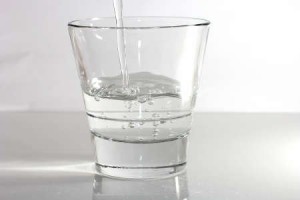
As September is National Recovery Mont I wanted to share with you the below article by recovering addict, Canadian CEO and author of the new book, Higher: Awaken to a More Fulfilling Life, Charles G. Hanna, “Addiction and Perception Disorder: 6 Things You Should Know.”
Addiction is cunning, baffling and powerful, and even after my surrender it kept trying to manipulate my mind to make me slip and destroy my recovery.
I am alive today only because of the miracle I experienced on my third day in treatment. As I entered my room and walked by a mirror, I glimpsed something I had never seen before. I jumped back to take a second look, but it was gone. Gone but not forgotten.
It was like the movie The Fly, where the man is lost within a monster. For a split second, I saw that monster. In that moment, I realized that I was possessed by a demon: addiction.
That was 28 years ago. I now realize that, long before I fell into substance addiction, I was already addicted to a way of thinking that provided the perfect hotbed for addiction. I call this way of thinking Perception Disorder.
Perception Disorder starts as mild discomfort or anxiety and can progress to a total inability to cope or function.
What is Perception Disorder?
Perception Disorder is a condition that causes us to view ourselves as the center of the universe. We see our world from a self-centered perspective and we evaluate everything based on whether we feel it is ‘good’ or ‘bad’ for us.
For example, we may enter a room just as people burst out laughing. If we suffer from Perception Disorder, we might immediately fear that they are laughing at us.
Or a partner may be troubled and want to talk to a friend, and instead of feeling empathy, we become afraid that they don’t value our opinion. This can cause strife and mistrust.
Without open dialogue, we cannot process the negative feelings we experience through our Perception Disorder. And over time, this can severely erode our quality of life.
How do I know if I have Perception Disorder?
Here’s a short questionnaire to detect the presence of Perception Disorder:
- Do you think of yourself (or have others described you) as self-centered, close-minded, oversensitive, negative, fearful, or childish?
- Do you worry excessively, lack empathy, feel shame, say that life is unfair, have enemies, hold grudges, or fail to take good care of yourself? (i.e. smoking, poor dietary habits or sleep patterns)
If you said ‘yes’ to either question, or if you often feel ungrateful or unhappy, then you probably suffer from Perception Disorder to some degree.
Perception Disorder develops during early life when a child is not given adequate attention and time for intimate talks that help her integrate into society with proper grounding.
Such a child is unlikely to share her feelings openly. And this may lead her to develop distorted perceptions about herself and her world. In extreme cases, these children become acutely insecure and vulnerable as they grow into young adults.
How is addiction connected to perception?
Addiction is a disease of perception.
Severe, progressive Perception Disorder can lead to addiction and substance dependence.
The first time a person experiences the numbing effects of any sort of drug or potentially addictive behavior, they may feel incredible relief and a sense of belonging. This emotional relief can initiate their dependence on a substance or behavior.
Over time, and through repetition of such behaviors, the person becomes increasingly isolated from society until the pain is so great that substance use and/or compulsive behavior becomes a repeated distraction, an anticipated relief, and ultimately a necessity.
So in its advanced stages, Perception Disorder can lead to substance abuse and/or behavioral disorders such as compulsive gambling, work, sex, love, or eating, and codependency.
6 Things to Know about Addiction and Perception Disorder
- Perception Disorder is a progressive disease and over time may result in severe mental illness, such as addiction.
- If you suffer from a substance abuse problem, get help to tackle that first. Nothing will help you before you stop using.
- Addiction is a disease that wants to kill you. For this reason, abstinence is not recovery; it is only a prerequisite to recovery.
- The underlying Perception Disorder was present before the abuse. It has become exacerbated by the abuse, so treating the Perception Disorder is imperative.
- Even if you find yourself completely down and out - perhaps hospitalized or incarcerated – don’t be discouraged. This may be your greatest opportunity to grow in a more meaningful way than would otherwise have been possible.
- If you suffer from an advanced stage of Perception Disorder, such as addiction, then getting outside help to arrest the disease must be your sole priority.
Charles G. Hanna is the Chairman, CEO, and founder of a third-party technology provider that he began in a basement in 1979 and built into a leading service consolidation company with offices across Canada. A devoted father of three children, Hanna is involved with a range of charities, including organizations that help with cancer treatment, Canadian artists, and displaced and handicapped people. He has a particular soft spot for children and animals, and contributes his personal time in various ways to youth shelter homes and animal shelter groups. He divides his time between Toronto and Los Angeles. For more information, please visit www.charleshanna.com, and connect with him on Twitter, @hanna_higher.
Guys, Get a Load of My Awesome Winter-Proof Fitness Activities
Okay guys, you need to make sure you’re staying in shape all year round. But, this can be difficult when you’re dealing with bad weather. So, why not make use of my winter-proof fitness suggestions. You can thank me later! For now, start focusing on getting that body in shape!
Self Defense

Image Link
Self defense classes are also a wonderful way of staying fit and healthy as much as possible. Now, these days you’re sort of spoilt for choice a bit when it comes to self defense classes. Look into local kickboxing or karate classes and sign up as soon as you can. You might also want to consider taking up wrestling! No, I’m, not talking about WWE, I mean actual wrestling. You’ll need to work on strength, and figure out your weight class. Use the digital wrestling scale buying advice available so you have the right equipment to start taking this seriously. Self defense classes are an awesome way of getting in shape and learning to look after yourself.
Go to the Gym
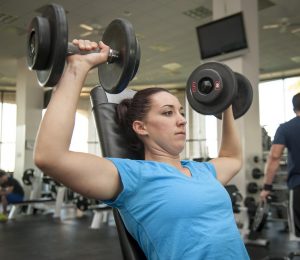
Pixabay.com
I know, I know, you’re probably rolling your eyes at this one. But guys, you want to get fit and healthy? The gym is the best way of doing this. It might seem laborious, but you’ve got to be disciplined about it. Did you know 80% of Americans with gym memberships rarely if ever use the gym? This is such a waste of opportunity, and you need to make sure you don't fall into this habit. Going to the gym may sometimes be the last thing you want to do, but it's also the best way of keeping fit.
Take Up Tennis

Picture
Why tennis you ask? Well, simple really. See, sport is a wonderful way of keeping fit, losing weight, and enjoy yourself. However, a lot of sports have to be played outside and are weather dependent. This becomes a problem in the winter because it is often cold, wet, icy and dark. However, tennis is something that you can play indoors all year around. And that's why it’s such a great sport to pick. Get in shape by taking up tennis and trying to emulate your heroes on the court. There are bound to be some indoor courts around your area, so this is worth looking into.
Workout at Home

Photo
I always tell people that they should come up with a way of working out at home. That means setting aside space where you can do exercise at home. If there's a spare room, or you have space in the garage, this is perfect. So, make sure you look at the best ways of doing this. Get some basic equipment like a weight set, a yoga mat, and an exercise ball. The great thing about getting fit at home is that it means you don't have to go out and join a gym if you don't want to. And it’s completely weatherproof as well. Buy some fitness DVDs as well so you have a good place to start. You will need motivation and discipline to workout at home, but it’s certainly something I’d recommend trying.
Just because we’re heading towards the cold and dark of winter doesn't give you guys an excuse to ease off. I know it’s not as easy in winter as the weather may not enable you to go running or cycling. But, there are plenty of other things you can do to help you keep fit, even in the winter.
Why You Need To Keep Track Of Your Fitness Goals'
April is about the time of the year when we find out whether we have managed to make fitness a habit or not. We're now nearly four months into the year and four months since we resolved to do more exercise.
The challenge now is keeping up all the good work. We're just getting to the stage where training is starting to feel enjoyable. It's no longer a painful pursuit we feel that we have to do to stay healthy. It's something that gives us a sense of freedom and self-esteem.
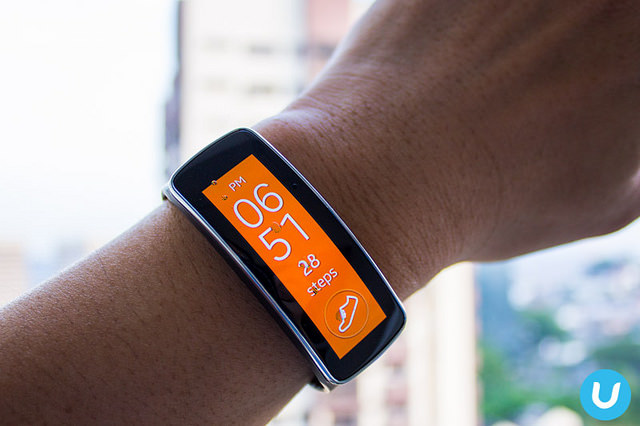 www.flickr.com
www.flickr.com
It's about this time in our training, however, that we start to plateau. We get stuck in a rut, doing the same safe exercises over and over again. We don't challenge ourselves like we did before, and our fitness levels stop going up.
That's why it's so important to start tracking your progress. Using trackers fr
om sites like fitnesstracker24.com make the process easier. One of the benefits of tracking is that it quantifies your progress for you. You get to see exactly what it is you're doing from week to week and what you need to do to improve.
Suppose, for example, you have a regular running route that goes for about four miles. A tracker will tell you exactly how far you have run and in what time. Of course, you could do that just using a watch and working out how far the route is on a map. But that means that you end up running the same route every day.
Fitness trackers are a great way of building variety into your routine. There's no need to take the same route every day to compare your performance. With GPS tracking, you can go pretty much wherever you want and still get a comparable score at the end of it. The flexibility of fitness trackers is their greatest strength. If you are somebody who regularly hits the gym, you can use fitness trackers to keep a track of the weights that you are lifting. The goal should be to increase the weight you can lift by about 5 percent every week or so if you're just getting started out. Trackers can record and store what you've lifted without you having to carry around a notepad and pencil around the gym.
But perhaps the biggest appeal of fitness trackers is the fact that they always give you a goal to strive for. Without all the helpful readouts and data, it's hard to know whether we are making progress. In some sports, like weightlifting, conditions change every week. The type of exercise may change, the number of sets might vary and so on. Just look at the sheer number of regimes you can try out at bodybuilding.com.
Trackers change all this and allow you to compare what you're doing today with your past performance. It's a remarkable tool. And it all comes down to the fact that trackers keep you accountable. They let you know when you're not making progress and prompt you to do something about it.
Having a rigid routine for training can be difficult for some of us and impossible for others. If your daily schedule changes regularly, you still want to be able to get fit. This means you’ll need a great activity, sport or exercise regime to do at any point in the day you can spare an hour.
With this in mind, here are a handful of fitness and exercise ideas suited to each different time slot in the day.
Morning… go running
Going for a run very early in the morning sets you up for the day, because cardio gets your heart pumping! The roads and streets will be quieter; if you live near main roads, you’ll find crossing much quicker. After all, which runners like jogging on the spot for five minutes because they can’t cross a busy road? If you’re running in a hot country or area, going early morning also means lower temperatures.
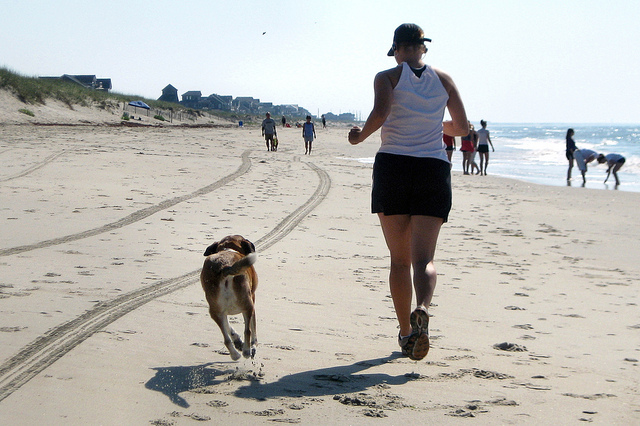 Image credit
Image credit
Early afternoon… go swimming
Public swimming baths tend to be at their quietest at this time of day. This is because most people are at the office, and the kids are still at school. The quieter the pool, the more space you will have to swim in and less you’ll be distracted by others. Check in advance if your local pool holds swimming classes for kids or the elderly, for example, so you can avoid these times too. A great idea is to head to the pool one hour before an in-water exercise programme begins. That way you could do an hour of laps, followed by an hour of water aerobics or something even more sporty, like water polo! That way you get two lots of exercise from only one trip. Avoid midday to 1 pm if you want to miss those exercising on their lunch break.
Late Afternoon…take a class
In the time between the lunchtime rush and the early evening rush, things quieten down a bit. That is why now is a great time to take a class. Lower participant numbers will make for more free equipment and space. Plus, the less in the class, they more attention you’ll receive from the instructor. They may even be willing to tailor the class more to you and your fellow participants. Remember that the gym isn’t the only place to take classes. You could watch a video tutorial on your TV, or head to your local church hall or school if they hold classes there. When it comes to picking a type of class, consider what your body needs the most. Check out http://physicalculturestudy.com/2016/02/23/5-things-you-should-be-doing-for-your-body/. This article touches upon the value of exercise for your body, amongst other things.
Evening…. Head to the gym
While gyms can get busy in the evenings, having lots of other people around might act as good motivation for you. It may also be the case that your gym runs the most classes at night, and/or has the most personal trainers around. In the winter, going at this time also means you don’t have to be training in the dark outdoors.
Whichever time of your day you train at, remember how important it is to have a varied regime. http://www.mensfitness.com/weight-loss/burn-fat-fast/trainer-qa-how-to-mix-cardio-and-strength-building-to-zap-fat had a good guide to doing this effectively.

“Sleep Secrets is the book you should read for good, practical information on how to get a good night’s sleep. Insomnia, sleep deprivation, snoring and sleep apnea — this comprehensive resource has it all.”
Dr. Andrew Weil, MD, author and director of the Arizona Center for Integrative Medicine at the University of Arizona
Get a Good Night’s Sleep – Reset Your Biological Clock
Some people are blessed with the ability to sleep anywhere at any time. Others find falling asleep a challenge that worsens with the passing of years. Left unattended, insomnia can become chronic, disabling and eventually even a medical condition.
Ronald M. Bazar, author of the new book Sleep Secrets: How to Fall Asleep Fast,
Beat Fatigue and Insomnia, and Get a Great Night’s Sleep, says that lack of sleep not only affects your ability to work effectively but can have serious effects on your relationships and your enjoyment of life. Lack of sleep also can wreak havoc with your hormones, your immune system and your body's ability to fight off disease.
“You need six and half to eight hours of good relaxed sleep per night in order to maintain and regenerate your bodies’ natural systems,” he said. “You don’t need to resort to taking drugs and narcotics every night either. There are other natural and alternative ways that work even better."
Bazar’s comprehensive and easy-to-read book includes, yet goes beyond, the sleep tips you've heard about and gets into both science-based research and complementary medicine tips for help resolving insomnia and other problems caused by sleep deprivation.
“One of the most important things to do is to reboot your body naturally and then control every factor that prevents you from falling and staying asleep. Here are some of his top recommendations about how to reset your bodies’ biological clock and create solid reliable sleep habits:
- Detach from your electronic devices well before bed. They are insomnia creators.
- Stretch before bed time. Get on the floor and do some stretching exercises half an hour before bed time. Do some yoga poses to relax your back and neck, and stretch your legs and especially your calves to help reduce cramping.
- If you are hungry before bed, have a light snack like fruit but don’t have heavy foods or a full meal or a very late dinner.
- Set your sleep time intentionally. Tell yourself that 10 PM is bed time and 6 AM is wake up time. Mentally establish and commit yourself to sleep on a regular schedule. Stick to it. Go to sleep the same time every night and get up the same time every morning. Make it a habit.
- Listen to soothing music or read for fifteen minutes or more before you turn off the lights. Just make sure you choose something that won’t stimulate your thinking, make you tense up or worry right when you want to go to sleep.
- Don't have any electronic devices in the room where you sleep. Turn off all lights, TV and radios, cell phones, laptops, computers, and all those power supplies that have a glowing LED or light. Move them into another room and away from your bedroom so they can’t make sounds that wake you up and interrupt your sleep. Use foam ear plugs to reduce noise levels that can prevent you from sleeping.
- Go dark, totally dark. Cover the windows with blackout shades to prevent light from entering the room where you sleep. Wear an eye mask for total blackness. You may even need to replace your alarm clock with something that doesn’t have glowing numbers or is backlit.
- Get up early! Set the alarm and get up just when it is getting light, before the sun rises. Better yet, learn how to awaken without an alarm. Don’t touch that snooze button.
- Get outside and spend 20 minutes or more in the bright early morning sun and fresh air. Take a walk, walk the dog, go for a bike ride, or do some work in the garden.
- Eliminate stimulants such as coffee, tea, soda or anything with caffeine, and sweet drinks with sugar. If you drink coffee, only have it in the morning and never have it after lunch or within four to six hours of bed time. Don’t drink energy drinks or caffeine drinks in the afternoon or evening.
- Take a short nap during the day only if you are sleepy. But if you have problems falling asleep at night, then do not nap until you re-establish a new rhythm. It’s OK to take a 20 minute nap if you get tired, but don’t go over 30 minutes and take the nap at least six hours before your normal bed time so that you are not over-rested to the point where it interferes with your normal sleep time.
- Get a comfortable bed and coverings. Turn the temperature down at night so it’s cool in the air and warm in the bed. Go hypoallergenic or organic.
Here are some other actions you can learn to get to sleep fast:
- Mind techniques to quiet the mind and help you relax
- Simple breathing techniques that will help you sleep easier and deeper
- Eat the foods that will help you sleep, and avoid the foods that don't
- How to fall back asleep quickly if you wake up in the middle of the night
- The best pillow to use for sleeping
- Inclining your bed can help you sleep
- Walking outside barefoot can actually help you sleep better at night
- Supplements and remedies to target your sleep needs -- or eliminate fears
- Solutions to snoring and sleep apnea
- Jet lag prevention tips
- Cannabis for sleep? How to find the right strain
- Special sleep advice for babies, teens, and elders
“Be consistent,” Ron says. “You can train your body and achieve the cyclic rhythms you need to go to sleep when you want to and get a good night’s rest. "
5 expert running tips from Polar
 Reach your runner’s high
Reach your runner’s high
Now’s the time to hit the streets and running trails! Whether you’re a novice or in it for the long run, there are two ways to become a faster runner: by moving your legs at a higher cadence or taking longer steps.
Here are some tips to get you started:
- The distance between your right and left foot touching the ground is called stride length. As speed increases, so does the stride length. Improve stride length by undertaking specific strength work like running hills, in soft sand, or up steps.
- Don’t over-stride! The most efficient stride length is the one that feels most comfortable.
- Cadence tells you the number of times your foot hits the ground per minute. To develop it, train your nerve-muscle connection by running regularly. A session of cadence training a week is a good start.
- Taller runners will naturally have slightly lower cadences, and the values vary also depending on whether you’re running up- or downhill. Tune in to what feels comfortable for you!
- If you’re training for a half marathon or a marathon, work on increasing leg speed at expected race pace to keep your legs from tiring mid-race. Set your M400 to show pace and cadence, and try to shorten your stride and increase cadence while holding the pace.
The Polar Bluetooth® Smart Stride sensor is ideal for keeping track of your stride length and cadence. Whether you’re running on a treadmill or the muddiest trail, you’ll see the information on your M400.
Get the Polar Bluetooth® Smart Stride sensor from the official Polar webstore or a retailer near you.
 Shop now
Shop now
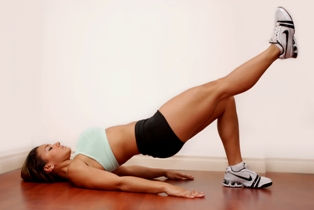
Why do you get sore the day after your workout? What causes you to feel stiff and and unable to walk up the stairs? No, you are not injured. The soreness that you are feeling is called DOMS and stands for delayed onset muscle soreness. It can be mild to severe and everyone can be effected by it. Do not be afraid to exercise when you feel it because the more you move the quicker it will go away. Muscle soreness is most commonly felt when you begin a new workout program, change your current routine, or increase the intensityof your workouts. DOMS is caused by microscopic tears in the muscle which creates build up of lactic acid in the muscles causing them to become stiff and tight.
There are lots of methods that you can use to reduce the discomfortof DOMS. People often use static stretching, massage, cardio, epsom salts, or ice baths. You can prevent DOMS from being so severe by doing a proper dynamic warm-up rather than jumping into your workout cold. Make sure to always start with light cardio for 5-10 minutes before your workout. Prior to exercise use a foam roller to roll out your muscles. It is also recommended to cool down with light cardio followed by static stretching. A stretch should be held for a minimum of 30 seconds. Make sure to alter workout intensities each day in order to allow for proper recovery.
Follow Alicia on Twitter: www.twitter.com/trainitright









 www.flickr.com
www.flickr.com Image credit
Image credit

 Shop now
Shop now